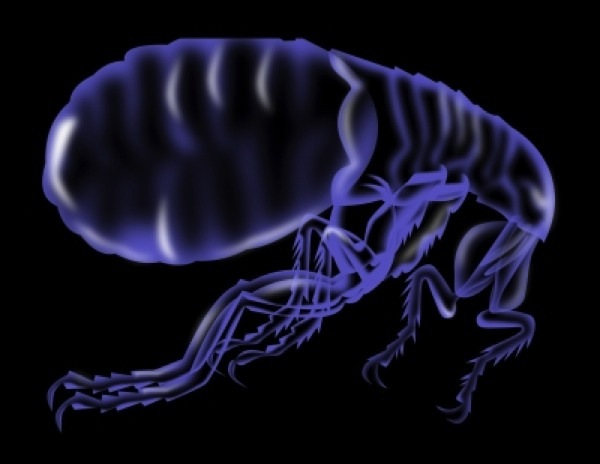Please Share This Article With Your Friends
Has My Cat Or Dog Got Fleas?
If you notice that your cat or dog is scratching more than normal then this is the first warning sign that they may have fleas.
The next thing to do is to look closely through their fur to see if you can see the little invading critters. They are very tiny, but look out for little black creatures that scurry and jump about.
You can also check your cat or dog’s bed, as you may be able to see evidence of fleas, such as little black specks, which is a sign of flea dirt!
Fleas can spread from cats to dogs and vice versa so don’t be surprised if all of your pets are itching like crazy!
Preventing Fleas
The best form of prevention for making sure that your dogs and cats don’t get fleas is to regularly treat them with a recommended flea treatment such as Frontline for cats & dogs. All you do is squeeze the liquid from the little pipette on to the back of your pets neck so that they can’t lick it off, job done!
Frontline works with the oil glands on your cat or dogs skin, working it’s way all around their body, killing any fleas or larvae in it’s path, usually within 24 hours.
Frontline should be used on your pets once a month, to create all year round protection against nasty fleas.
Make sure that you don’t mixup the flea treatments with your cats, dogs and other pets as not all flea treatments are suitable for all pet species.
Treating Dogs, Cats & Other Furry Pet Friends For Fleas
Again, the best form of treatment for fleas is to immediately use a recommended flea treatment on them such as Frontline for Cats & Dogs.
You should also clean all of their bedding and blankets on a hot wash to kill any of the fleas or flea larvae.
Make sure you vacuum and dust the whole house, as fleas can lay their eggs anywhere and everywhere! Empty your vacuum into the bin outside afterwards to make sure the fleas don’t escape back into your house.
You can also buy special flea spray, which you can spray around the house to kill off any fleas or flea larvae hiding away in your carpets and furniture.
Complications Of Flea Infestations
Fleas can be rather nasty to their host (your dog or cat) and can cause all manor of problems.
Some pets can be hypersensitive to flea saliva and can suffer from an allergic reaction, with symptoms such as hives or even anaphylaxis.
The flea larvae can become infected with tapeworm eggs so if your pet then goes on to eat one of the infected fleas or larvae, then the tapeworm eggs will pass into your pets stomach and will take on your pet as it’s host! This is why it is always wise to treat all of your cats, dogs & other furry pets for worms as well as fleas.
Fleas actually feed on your pets blood, which is why, when you manage to squash a flea, red blood will come out of them. This can be dangerous for young kittens or older, more vulnerable cats as they could die from blood loss if it is left untreated.
Another complication, is that fleas can pass on nasty diseases to your pets such as Myxomatosis which is a serious disease in rabbits, spread by fleas.
Flea Your Pets Today!
So if you haven’t flea’d your cats, dogs or other pets in a while, go out and buy some flea treatment such as Frontline and treat all of your pets to make sure that these nasty critters don’t invade your home!
Many Thanks, Adam & Laura
Please Share This Article With Your Friends
Photo provided by vectorrolie / Freedigitalphotos.net

